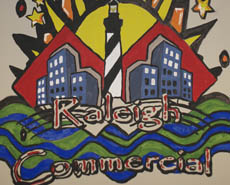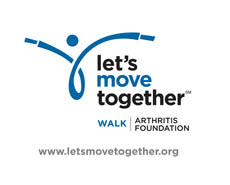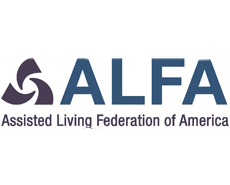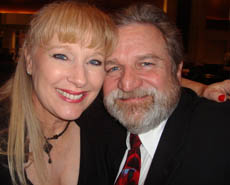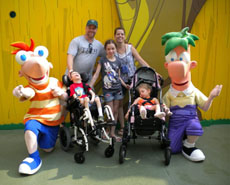Yardi Systems’ Raleigh, N.C. team let their artistic sides loose last Friday to create temporary murals in one of their office conference rooms. The interim installation of cool employee-painted art, which will stay up during an office expansion, resulted in a variety of cool colorful murals. Here’s one of the most artistic from the Commercial team. Looks like they have great creative skills in addition to real estate technology know how!...
Bike to Work Day
Celebrating CycleMAYnia
Yardi employees in Goleta, Calif. are encouraged to join their coworkers in cycling to work on Tuesday, May 15 in celebration of Bike to Work Day. Tuesday is just one of many events organized in May in celebration of cycling. Those who ride to work can enjoy a free Goleta-wide breakfast sponsored by Yardi in the 430 building parking lot, with tasty treats from the Goodland Kitchen and camaraderie with fellow employees at Yardi, as well as other nearby businesses. Food will be available from 7:30 a.m. to 9 a.m., and a bike mechanic from local bike shop VeloPro will also be on hand to address any bike maintenance needs. A turnout of 75 riders last year is likely to be exceeded in 2012, said Kelly Schmandt, who coordinates the Yardi-hosted Bike to Work Day Goleta breakfast. “The whole concept of CycleMAYnia is a really fun and interesting idea,” Schmandt said. “It gets people engaged in cycling and off the road with their cars.” More than 30 dedicated Yardi team members are engaged in a month-long competition in which teams earn points each time someone rides their bike to work, or on another trip that would otherwise have been taken in a car. Two of the Yardi teams, the Rasta Road Rashers and Zen Rabbits, are perennial high finishers who have already racked up many points in this year’s competition. Winners of the Bike Challenge chose a charity to benefit from a cash award in their honor. The challenge, which motivates riders to skip the convenience of the car for the environmentally friendly, endorphin inducing alternative of pedal power, is a great way to motivate those who might not otherwise want to cycle to work, Schmandt said. “It’s fun, competitive, healthy, saves money and...
Let’s Move Together...
Yardi takes on Arthritis Walk
Back in March we introduced you to Marilyn Hansen, programmer, runner, and charity volunteer extraordinaire. This month, Marilyn has organized a team of Yardi employees to participate in the Santa Barbara Arthritis Walk, a yearly event put on by the Arthritis Foundation and one of their major fundraising events. Arthritis is the most common cause of work disability in the nation. There are over 120 forms of arthritis and other autoimmune diseases. Rheumatoid arthritis affects 1.3 million Americans and osteoarthritis affects 27 million Americans. Juvenile arthritis affects over 300,000 children – more than cystic fibrosis, cerebral palsy and muscular dystrophy combined. Marilyn’s passionate volunteerism is motivated by her personal connection with the disease – one of her daughters suffers from debilitating arthritis and has gone through multiple surgeries to help regain her mobility and active life. “The money raised from the Arthritis Walk will help fund research to find new drugs to treat this debilitating disease. It also funds local exercise, aquatic and tai chi programs for people with arthritis, camps for local children with arthritis, and educational outreach programs to inform people about arthritis,” Marilyn told us. You can support the efforts of the Yardi walkers here. The walk takes place on May 19 at 9 a.m. at Santa Barbara City College, and proceeds to the beautiful Santa Barbara...
3D Printing
A world-changer?
3D printing (also known as additive manufacturing and stereo lithography) utilizes an extruder to construct objects a single layer at a time, in varying micron thicknesses, according to the specifications of a CAD program. These printers can use a wide range of materials, from various plastics and PVC, to aluminum and titanium. Watch as a rack of fold-up multi-tools is ‘grown’ in just a few hours: The advantages of 3D printing, over traditional manufacturing, are that it is better, faster and cheaper than its predecessor. The technology is in its fourth decade and applications already run the gamut. 3D printing is used for military, medical, engineering tasks of every stripe, and has also been employed to make jewelry and footwear. It has great potential as a future method for creating artificial limbs for amputees. Within the real estate world, architects and developers are familiar with the technology as it is used for 3D rendering of scale building project models that can be presented to investors, owners, approval bodies and financiers. CAD and concept modeling applications are one of the best established consumer uses of 3D printers. So why does this technology still seem to be flying under the radar? Blame popular media coverage, which overwhelmingly focuses on the novelty aspects of the technology (“You can use it to build Legos!”), while simultaneously posturing that widespread access to such devices exists only in the far future. There seems to be an unwritten law that if you write about 3D printing you must, in the title, reference the fact that it will either shape the future or change the world. Heavy hitters like Forbes, CNET, and Technology Review have bought in. There’s even unrealistic concern that consumers with access to 3D printers could “pirate” popular toys...
Share Our Strength
Tasty treats benefit hungry kids
This week, Yardi Systems’ Santa Barbara office held a bake sale with a fabulous variety of treats – from red velvet cupcakes to toffee-crunch chocolate cookies to parfaits to peanut butter buckeyes – all to benefit Share Our Strength’s Great American Bake Sale, which raises money to prevent child hunger. With 1 in 5 kids in America struggling with hunger, the folks at Share Our Strength came up with a cool and creative way to raise funds. Their efforts to get feeding opportunities into schools and youth recreation programs have been successful and the cause is one that millions of Americans support via the bake sales and fundraisers. The Santa Barbara office includes dozens of very talented bakers, who pulled out all the stops to create beautiful edible treats. Just as in the recent Pi(e) Day challenge, the results were better than dessert at any nearby bakery. The Bake Sale raised $578 for Share Our Strength, and the funds were matched by Yardi with all proceeds going directly to this important cause. Check out the photos of some of the delicious creations that were available at the bake sale. Check out the images below from the Yardi Events Marketing...
ALFA Honor
Pathway Senior, Yardi share award
Yardi and Pathway Senior Living, a Yardi client, have received the 2012 Best of the Best Award in the technology adoption category by the Assisted Living Federation of America (ALFA), it was announced Monday, May 7. The award recognizes contributions from Pathway Senior Living, a Top 80 assisted living provider, to Yardi’s development of the Yardi Medicaid Billing Solution, which is available to users of Yardi Voyager™ Senior Housing. Award criteria included uniqueness, innovation, business excellence and quantitative assessment. “The Medicaid Billing Solution is truly a program we believe will advance excellence in senior living,” said Jamison Gosselin, ALFA senior vice president of marketing and communications. For the full press release, visit...
Cost of Conservation
Conforming to IECC will be pricey
Energy conservation, resource preservation, personal health and the environment have taken priority in recent revisions of building codes. Few would claim that such issues are negligible. Problems arise, however, when architects, builders and owners are faced with a myriad of costly code standards that may not be able to yield desirable returns. Adapting the 2009 and 2012 International Energy Conservation Code (IECC) will add hundreds of thousands of dollars to construction costs for apartment buildings. Traditional construction costs are determined by estimated market revenues. Revenues, in turn, are determined by rent rates. International energy codes by nature cannot be catered to specific markets, therefore such codes commonly remove projects from their intended markets. Affordable housing is most noticeably affected by these changes. A document entitled “Impact of the 2009 and 2012 International Energy Conservation Code In Multifamily Buildings” was released by the National Multi-Housing Council and the National Apartment Association to analyze the financial impact of the new codes. The cost of compliance with the 2012 codes is steep, eclipsing costs of 2009 codes by 200 percent in some cases. Low-rise multifamily housing in climate zones 1-4 will feel the greatest impact. Construction costs will increase by $480-$2,160 per unit. Timely payback is a reoccurring issue with green building. The NMHC/NAA report calculates that certain regional codes increase the efficiency of a building so nominally that it could take 191 to 252 years to see returns, yet to implement the codes costs thousands of dollars per unit upfront. IECC 2012 codes focus mainly on the design and composition of a structure’s envelope and insulation. Air Sealing: Air sealing the structure has proven to be a cost-effective measure to improve energy conservation. Such tightly sealed envelopes may decrease air quality, making it difficult to control ventilation and moisture. To offset these issues, costly additions must be made to supplement code requirements. Insulation: R-3.8 insulation board (as recommended in IECC 2006 codes) is adequate for thermal bridging in most cases, yet newer codes encourage additional layers of insulation in wall cavities. The R-value requirements may necessitate changes to traditional building frames and building veneers to accomodate. These layers do not result in significant energy savings; the savings that are incurred over time do not offset construction costs in a timely manner. Since insulation has diminishing returns across the board, the long-term efficiency of the structure does not increase proportionally to the R-value of the insulation. Additional Expenses: A number of the 2012 recommended practices require services and products that are not traditionally implemented in multifamily construction. To facilitate these changes, multifamily firms would need to embark on various campaigns to create worker training programs, seek and obtain cost-effective contracts with third-party consultants, and plan to restructure previously accepted building systems. The Bottom Line: To give multifamily firms an idea of what to expect, section B.10 of the NMHC and NAA’s analysis provides cost evaluations for different types of structures based on their climate zones. The 2010 Engineering News-Record’s Square Foot Costbook and “practical project costs” were used to create the evaluation, including “subcontractor costs for material, labor and taxes, and general contractor overhead and fees,” as well as a maximum 11 percent for overhead costs for the subcontractor. Price estimates are given per unit. The estimates are humbling. Poor returns make the cost of meeting IECC standards unappealing to multifamily firms with flexible budgets and nearly unfeasible for affordable housing firms. The goals of energy efficiency and resource conservation risk being lost or grossly underrepresented in the industry without recommendations that yield more timely returns. As IECC continues to issues new standards for the industry that raise the costs of building without consideration for individual markets, affordable housing will undoubtedly fall behind without further government support. What are your views on the cost of meeting the IECC standards? Have they affected your property or bottom...
Food Bank CENC
Serving Central and Eastern NC
Yardi Systems’ philanthropic efforts take on many forms, from monetary donations to employee-powered efforts to benefit and serve their communities. Sometimes the contributions are a combination of both. One of the most impressive food drives conducted at Yardi’s offices is the collection made on behalf of the Food Bank of Central and Eastern North Carolina. Each year, employees in our Raleigh office surpass the amount of donations they collected the year before. In 2011, 4,000 pounds of food were collected. They’re urged on by Rose Heibert, a team member with particular personal passion for the cause. Yardi also contributed a $10,000 general operating fund donation last year. With food and the grant, Yardi has provided 45,868 meals to the Food Bank of Central & Eastern North Carolina to date. Employees from Yardi’s Raleigh office also donate their free time as Food Bank volunteers. Volunteer jobs include sorting food, packaging bulk items into distributable packets, administrative tasks and much more. The Food Bank of CENC has seen large growth in the need for its services over the last three years, and that need exists year round. Last year the organization distributed 42.7 million pounds of food. Serving 34 counties, donations are distributed from the central food bank to more than 800 partner agencies such as soup kitchens, food pantries, shelters, and programs for children and adults through warehouses in Durham, Greenville, New Bern, Raleigh, the Sandhills (Southern Pines) and Wilmington. Within the Food Bank CENC’s service area, approximately 545,000 people are at risk for hunger, meaning that they “may or may not know where their next meal is coming from,” said Jennifer M. Caslin, coordinator of marketing, public and branch relations for the Food Bank. Of that population, 34 percent of those who may be...
Joanne Massey
Sundance Square
Joanne Massey is the controller for Sundance Square, the renowned Fort Worth property management firm owned by the Bass family that controls 35 city blocks of the city’s downtown core, including numerous historic buildings, and is considered one of America’s most successful urban revitalization efforts. But her interest in cool stuff from the past doesn’t end when she leaves the office. In her free time, Joanne and her husband Robert enjoy shooting vintage lever action guns – “the kind that cowboys used to shoot” – in Cowboy Silhouette competitions. She’s reached the AAA level in many of the competition categories, which is no surprise when you learn that she’s a former national-caliber archery athlete. She got into Cowboy Silhouette after reconnecting with her husband, a college sweetheart whom she married four years ago. He was attending competitive rifle and shotgun events, so she tagged along. The Omaha native is also an avid golfer who hits the course several times a month. “I won’t go and just sit, that’s too boring,” she told us. While attending college at Texas Christian University, she was the top female collegiate archer in the state of Texas, and ranked in the top 10 nationally. Though the U.S. team selection process for the 1980 Olympic Games didn’t go in her favor, she has fond memories of her archery days. Joanne is also right on target with her career at Sundance Square, where she rose up through the Bass corporate accounting office to head up the accounting team for Sundance and oversee numerous major software transitions. Her team initially ran two high-rise office towers, then merged with another Bass-owned operation to form Sundance Square that oversees all of the downtown properties. She loves her job. “Being in a property management office,...
Julie Bradley
Yardi
Julie Bradley is known for her efforts to deliver great customer service to her Yardi Voyager clients, who rave about her custom reports and willingness to go the extra mile. But there are a lot of things they might not know about Julie – like her status as a member of MENSA, that she’s a math whiz who loves hard number puzzles, and that she named two of her three sons after Alice Cooper. Oh, and she also collects whisks (that’s right, those things you use to beat an egg) and has a tattoo of a dragonfly on her ankle. Who said math majors are boring? Julie worked for CTI for 11 years before coming on board with Yardi nearly two years ago. She’s a team lead for Client Services based in Dallas, Texas. “I love the challenges and working with the data, and I love writing reports and getting in and looking at things behind the scenes to figure out problems” Julie told us. She also likes helping her clients with problem-solving and producing the results they are hoping for. Julie holds a degree in mathematics from North Texas State University and has always loved the logical aspect of math with its absolute results. She loved logic puzzles as a kid and today can spend hours playing a game called Kakuro, a Japanese logic puzzle that’s considered the “mathematical transliteration of the crossword,” according to Wikipedia. Some of the puzzles can take days to solve. Her MENSA status is directly tied to her love of math and puzzles as well. “I wouldn’t say I’m an active member, but a few years ago I wanted to challenge myself to see if I could pass their test. The test consists of a lot of logic...
Bed Bugs Bite
Eradication isn't easy
Bed bugs have re-emerged in the multifamily housing industry after a nearly 50 year sabbatical. Not since World War II has the US experienced such an infestation. According to reports released by the National Apartment Association, bed bug-related reports have increase by more than 60 percent since 2004. In the past, property owners turned to DDT to fend off the critters with much success but the harsh chemical was banned in 1972. Since then, leadership has scrambled to find safe and effective methods to rid properties of the pest. To exacerbate the problem, the parameters established by the HUD Handbook do little to prevent re-infestation or encourage tenant cooperation, a conundrum which can sometimes render management personnel incapable of permanently eradicating bed bugs from their properties. The following guidelines outline the current best practices as suggested by HUD Notice H 2011-20, which is available for affordable housing professionals for bedbug prevention, detection, and treatment as well as resources for funding bed bug initiatives. Prevention: Owners and management agents (O/A) are encouraged to create an Integrated Pest Management (IPM) Plan, following the guidelines of provided by the Northeastern IPM Center at Cornell University. A successful IPM plan includes educational programming for staff and tenants, as well as routine inspections. The O/A may offer inspections of new tenants’ furniture prior to moving in, as well as inspections when tenants return from trips; such measures currently cannot be made mandatory. Detection: The O/A are encouraged to seek third party professional consultation for bed bug identification. Units above, beneath, and beside the unit in question must also be inspected within three days of the tenant complaint. Treatment: Many chemical treatments are not considered to be reliable or have not been legally approved for use in residential units. At...
5 Takeaways from AIM
Conference highlights
This year’s Apartment Internet Marketing (AIM) conference, which concluded today in Phoenix, definitely put the “social” in social media by the sharing of information between hundreds of multifamily executives. Conference panelists included people across the gamut of the industry, including speakers from Yelp, apartmentratings.com, Google and many others. And we can’t leave out the stuffed monkey, named Bongo, who helped demonstrate what was probably the most important message conveyed here about launching a social marketing campaign: “Keep it simple (stupid).” Here are five other take-aways from AIM 2012. Make social media easy (and fun!) for your residents or prospects. If you want engagement on your sites, you have to make it easy for people to participate. Have lots of calls to action. And make the campaign something that they would actually participate in, such as entertaining videos, funny pictures, and giveaways. People are suckers for free stuff (case in point: all the cool AIM swag I have safely squirreled away in my luggage.) Go topless (AKA: get their attention). One speaker mentioned the new Mini Cooper campaign, which was set up as a peep show because the new car (a convertible) was “going topless.” That definitely got everyone’s attention, and is sure to stick with people. When you’re starting a new campaign, make sure you are original and you grab people’s attention. If not, your campaign is in danger of disappearing in the white noise of the million other apartment community campaigns out there. Ratings and reviews are a good thing. Even if they’re bad. Everyone rates everything online. Hotels, restaurants, apartment communities… Make sure you’re monitoring all the talk about your property. And respond! Residents want to know they have a voice, and that you’re listening. Just know when it is more appropriate...
Make a Wish Foundation...
Dreams come true for ill kids
The wishes range from the simple – “I wish to have a PlayStation 2,” one little boy requested – to the unusual – “I wish to receive a blessing from the Pope,” asked another. But both were granted, thanks to the efforts of the Make a Wish Foundation of Georgia and Alabama. Make a Wish, a national organization with chapters around the country, is supported by Yardi Systems as part of our corporate philanthropy program. Helping sick kids realize some of their wildest dreams is the organization’s mission. “There are parents who tell us they hadn’t seen their child smile until they got their wish,” said Jill Thornton, Director of Development for Individual Giving. “We have children who wouldn’t eat, and after they got their wish they were able to start eating again.” The wish recipients are usually struggling with chronic, sometimes terminal illnesses. “When these children are granted a wish, they get more than just a great experience for a day, two days or a week. That special wish improves the quality of life for them and their families. It gives them hope, strength and joy during a very difficult and challenging time,” explained John J. Brennan, CEO of the Make-A-Wish Foundation of Georgia and Alabama. Yardi has donated over $35,000 to the organization over the last three years. “On behalf of all our “Wish” children and their families, as well as our volunteers and staff, I thank and applaud Yardi for making such a vital and far-reaching difference in the lives of our Make-A-Wish children, year after year!” Brennan said. See some of the touching stories of the wishes granted by the organization recently on their website. Below, read about a wish that was granted for a 10-year-old girl named Jessa. Yardi...
Taking data to go
Secure USB drives
Network security gets the lion’s share of the press, but an often overlooked part of data security architecture revolves around the use of USB drives. As the capacity of these devices continues to soar, more and more data is going mobile. But that convenience is a double-edged sword that also carries with it the danger of loss or theft, and the resulting potential for a disaster. Kingston, a brand already well-known for its multitude of award-winning flash storage solutions, recently introduced its latest ultra-secure USB drive, the Data Traveler 6000 (DT6000). This device offers an incredible array of safeguards: FIPS 140-2 Level 3 validated No passwords stored on device or host Utilizes elliptic curve cryptography (ECC) Drive locks down, encryption key self-destructs after 10 intrusion attempts Secure channel communication Enforced complex password Tamper-proof physical security barrier If you don’t know what some of that means, take my word for it – this device provides amazingly robust protection for data. The DT6000 is also built to survive rough handling – the casing is titanium-coated stainless steel and the drive is waterproof up to a depth of four feet. But is there a need for such rigorous flash drive security standards in the business world at large? Kingston gears its sales pitch toward government organizations and financial institutions that routinely move sensitive data and customer files. As sales director Nidhi Sethi noted at a recent DT6000 launch event: “Establishing security policies and deploying USB products that prevent data loss is as important and immediate as an organization’s network security. Using non-secure USB drives makes organizations vulnerable to data loss and breaches that can affect the company’s credibility with its employees, customers, and partners. The DT6000 is the most secure USB flash drive available and will meet...
Lucy Billingsley
Billingsley Co.
Lucy Billingsley’s distinguished career in real estate development ranks her among the nation’s leading female industry executives. In the fourth decade of her career, she maintains great passion for the next project to command her attention. “My favorite deal is always the next one,” she told us during a recent interview. Billingsley Company, the Dallas-based company with land, office space, industrial, retail, single-family, multi-family, mixed-use and master-planned developments that she and her husband Henry founded in 1978, is flourishing. New phases of 10,000 unit master-planned rental communities The Neighborhoods of Austin Ranch and Cypress Waters are currently underway, and Billingsley is excited about changing the face of the multifamily experience. The company is also expanding its office and industrial holdings. Billingsley also devotes much of her time and energy to charitable work, and her philanthropy has included The Chiapas Project, Grameen Foundation USA, Women for Women International, National Geographic Society Council of Advisors, World Affairs Council (Dallas), Brain and Creativity Institute at USC, Council of Foreign Relations, The Hockaday School, and The Hunter and Stephanie Hunt Institute for Engineering and Humanity Advisory Board. In a short conversation, she filled us in on few views of the current marketplace, how she chooses philanthropic causes, and the lessons that her father, famed developer Trammel Crow, imparted to her. TBS: It’s been a challenging climate for real estate sales, investment and development over the last several years, although Texas come through the down economy very strongly. What do you see as the most pivotal focal points for property executives as the financial climate nationally continues to improve? LB: I think the multifamily world is a world that has made a significant and permanent shift in its role in America today – the shift is because the American...
John Caputo
Yardi
John Caputo has a life mantra that encapsulates his multi-tasking, many faceted work personality. It’s “those who say it cannot be done should not interrupt those who are doing it!” A medal-worthy multi-tasker, John is a talented IT professional with a big heart, diverse job history, and amazing love for his family. He recently ran his first 5K to benefit his children’s school and takes care of all the IT needs for Yardi’s offices in Glen Head, N.Y., as well as for the New York-based Property Shark, Multi-Housing News and Commercial Property Executive teams. Before finding his calling as an IT professional, John held a variety of jobs of all kinds. He managed a Manhattan pizzeria, delivered auto parts while attending trade school, worked in a bank and was a DJ. But the worst gig he ever had was working for his dad’s garbage company in Brooklyn. The work day began at 8 p.m. and ended at 2 a.m., the neighborhood was rough and the garbage – well, you can imagine. “It was a bad section of town, and I’m not even going to go into detail about what we picked up,” he recalled. But he stuck it out for four years, when his father sold the company and encouraged his son to pursue a professional job. John had tinkered around with computers since his teen years, and heard about a networking education program that led to his current career. At work, everyone knows John as the guy who can fix everything – and we’re not just talking about computers. He gets asked to work on iPhones and cars, too. And the requests don’t end after he leaves the office; his neighbors rely on John for IT support as well. He tries to accommodate...
Selling to Seniors
Niche communities emerge
As the Baby Boomers head into their retirement years, a new market for senior housing is opening up – niche residential communities that cater to active older adults. Concept living, based around activities like education, recreation, or belief systems, is a hot trend. With today’s seniors enjoying longer life expectancies than ever before, the option to have full, active lives after retiring is an opportunity for residential project developers. Older adults might want to downsize from the large single family home where they raised their kids and lived out their careers, but they don’t want to give up any freedoms. In fact, the more affluent are often seeking high-mobility housing options, where a supported residential lifestyle can be combined with frequent travel to visit friends, family, or see the world. Some industry experts even anticipate that over time, the housing and care options for adults over 65 will morph into two distinct markets. Rather than the awkward combination of independent and assisted living we see today, there will be more independent offerings for each life phase as the 78 million Baby Boomers come of age. A recent study found that many Boomers are unhappy with traditional retirement communities and seeking more innovative options for their later years. Here are a few of the concepts that communities are using as an entry point to attract active senior residents. Life-long learning: These programs, in which seniors live near or on a college campus and can attend classes at free or reduced cost, are popping up at colleges all over the country. A trend-setting model was established 12 years ago on the campus of Lasell College in Newton, Mass. Today there are 225 residents, most of whom live independently and take college classes – the community even...
Redefining Residential...
Luxury in multifamily
Yvonne A. Jones has had a long and accomplished career in commercial real estate. Currently Managing Director of Asset and Property Management at Chicago-based McCaffery Interests, Inc., she’s also serving as President-Elect at IREM Chicago, Chapter 23. Recently The Balance Sheet had the chance to talk to Jones about her new foray into the residential sector, which is new for her. She spent almost nine years focused on the management, leasing, acquisition, disposition, and financing of commercial real estate assets at Zifkin Realty Group, LLC. At McCaffery, she’s overseeing mixed-used projects like the Roosevelt Collection in Chicago’s South Loop, which the company acquired in June of 2011. (The development was initially constructed in 2007 by Centrum Properties.) McCaffery is changing the layout of the project’s 440,000 square feet of retail space and creating a vibrant community mixed use space for residents and shoppers to enjoy. The shopping center is anchored by the popular Kerasotes ShowPlace movie theater, one of the nation’s top three theaters. Dan McCaffery, CEO of McCaffery Interests, is considered an industry and market leader in creating Class A living experience for residents of his company’s multifamily properties. His early projects, like The Bernardin, reflect a unique concept of high-end luxury living that residents adore. “His idea and his concept at the time was to really bring the hotel experience to the apartment home community,” Jones said. “I think when you look at what he designed at the Bernardin and Flair (Tower) and what he’s done at The Morgan, his focus is really on making these communities a place people want to come home to, where they get that hotel service and quality. Everything we do is really about creating that experience, making people feel like they’re walking into that beautiful hotel...
Google’s Nexus tablet...
Count down to anticipated release
Google Chairman Eric Schmidt revealed in an interview last December that the company was hard at work on bringing a low-cost tablet to market, with a “six month window” until the debut. Since then, trying to piece together the specs for the “Nexus tablet” has been one of the industry’s favorite guessing games. Now with that six month window approaching its close, some of the details are more than mere guesswork. The biggest teaser so far is the price point: Google apparently plans to sell the tablets for just $149. That’s far below what consumers have been shelling out for the iPad, Thinkpad, Galaxy Tab, and other high-end models. It’s also less than what a Kindle Fire costs, which is currently the belle of the ball among the affordable tablet set. At that low of a price, does the Nexus tablet offer enough performance to appeal to consumers? Here’s what we think we know about the Nexus tablet: 7” size runs Ice Cream Sandwich, aka Android 4.0 Snapdragon processor (instead of the previously rumored Tegra 3) Aaaaand… that’s it. Not a lot to work with there, and definitely too early to tell whether the Nexus tablet is going to have enough horses under the hood – along with bells & whistles – to appeal to upscale buyers. A lot of what we think we know is based upon a recent piece of vaporware, the ASUS MeMo 370T. This device, which was shown off in limited fashion at the 2012 CES, featured a 7” display, 1GB RAM, and an 8 megapixel camera, all running on the Ice Cream Sandwich platform, for somewhere in the neighborhood of $250. Now the MeMo 370T has apparently been scrapped, because ASUS is Google’s hardware partner on the Nexus tablet....
John Edwards
Cottonwood Capital
When John Edwards and his wife, Darcy, moved to Salt Lake City, they only expected to stay for a year. That was more than 20 years ago. Today, John oversees the installation and support of Yardi Property Management software for all of the properties of Cottonwood Capital, a Utah-based real estate and investment company. John’s journey to his current position in technology management was an unexpected one as well. When he and Darcy moved to Utah so she could pursue her nursing career, John took what he expected to be a temporary job as a bookkeeper/accountant for a Salt Lake City apartment complex. “The plan was to stay for just a year. 15 years later, I was still there,” he told us in a recent interview. The management company of the complex was Nevins Adams Lewbel Schell (NALS), and John ended up trying a variety of on-site jobs, including leasing agent and property manager, before falling into an unexpected role as a training expert on Yardi’s computer programs. His natural affinity for computers and learning new things made him a perfect fit, and he even overcame a fear of public speaking as a result. John received his CAM Certification (Certified Apartment Manager) from the National Apartment Association in 1997. Five years ago, he accepted a position at Cottonwood Capital, where he oversees all of the company’s Yardi needs. More than 100 property managers will attend a company retreat later this month, where John will revisit that previous role he enjoyed, training on-site personnel. Cottonwood’s management portfolio now includes 110 residential properties, a more than 10-fold increase from five years ago. “I just love learning new things, working with the managers and helping the managers succeed,” he said. Many of Cottonwood’s management-level staff have worked...

